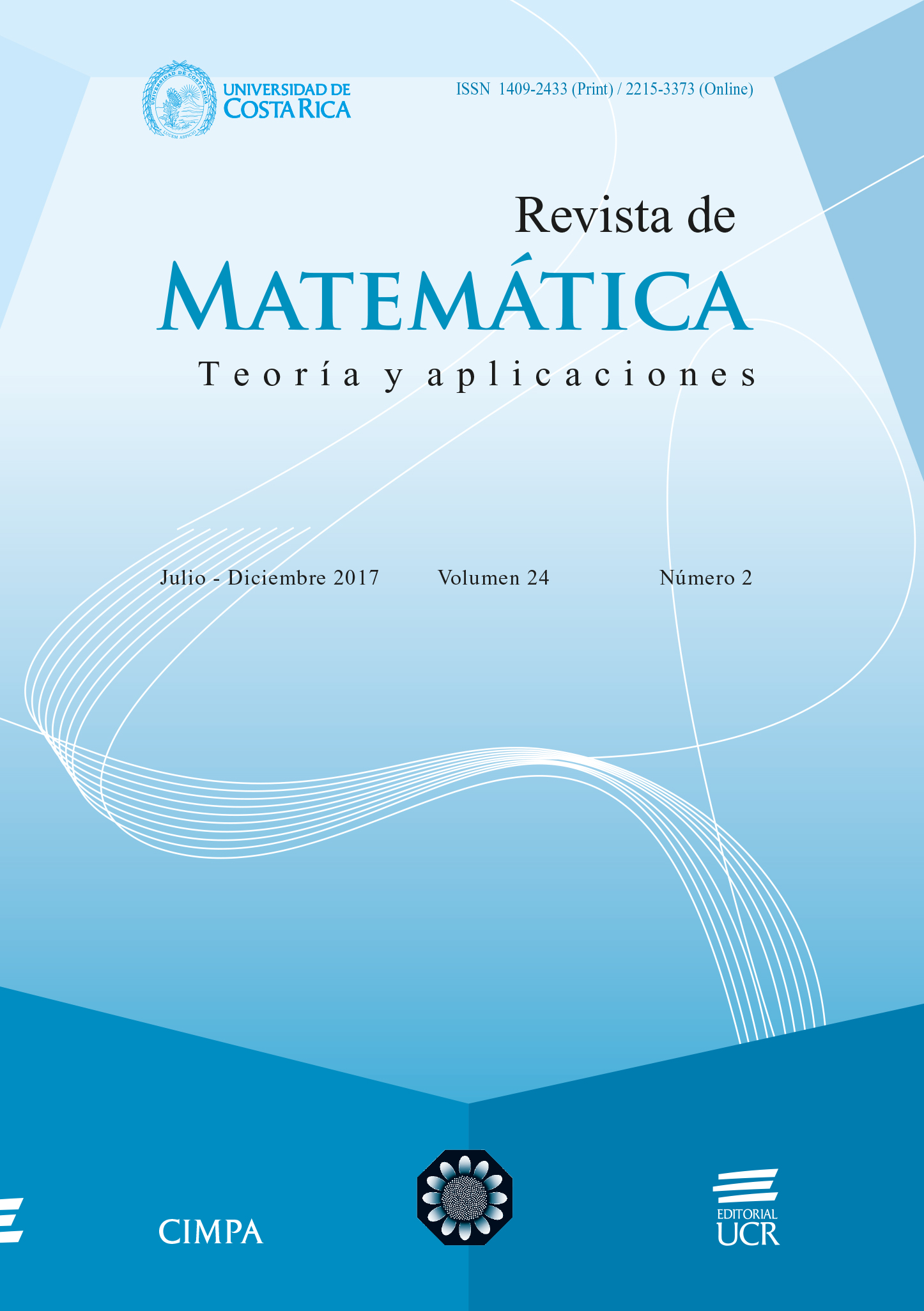Resumen
En este artículo se presenta un análisis de la eficiencia técnica y de escala de las unidades académicas de la Universidad de Costa Rica. La metodología utilizada es el Análisis Envolvente de Datos (DEA, por sus siglas en inglés), pues permite medir eficiencia relativa y proporciona información sobre cómo debe mejorar cada unidad académica que resulta ineficiente. Se reportan los resultados para tres agrupaciones: una basada en el proceso formativo, otra en el tamaño (de acuerdo a tres entradas) y la tercera basada en área de conocimiento. Se usan tres indicadores de entrada y tres de salida. Se realiza un análisis de sensibilidad por medio de la formulación de cuatro modelos.
Se hace énfasis en el modelo matemático utilizado, correspondiente al modelo orientado a salidas y con rendimientos de escala variables, el cual se resuelve con los datos normalizados.
Citas
Abbot, M.; Doucouliagos, C. (2003) “The efficiency of Australian universities: a data envelopment analysis”, Economics of Education Review 22(1): 89–97.
Arcelus, F.J.; Coleman, D. (1997) “An efficiency review of university departments”, International Journal of Systems Science 28(7): 721–729.
Avkiran, N.K. (2001) “Investigating technical and scale efficiencies of Australian universities through data envelopment analysis”, Socio-Economic Planning Sciences 35(1): 57–80.
Avkiran, N.K. (2006) “Variable returns to scale-universities”, en: N.K. Avkiran (Ed.) Productivity Analysis in the Service Sector with Data Envelopment Analysis, Brisbane, Australia: 45–57. De: http://www.users.on.net/~necmi/financesite/DEA%20Book%203rd%20Edition%202006_AVKIRAN.pdf.
Banker, R.D.; Charnes, A.; Cooper, W.W. (1984) “Some models for estimating technical and scale inefficiencies in data envelopment analysis”, Management Science 30(9): 1078–1092.
Beasley, J.E. (1995) “Determining teaching and research efficiencies”, Journal of the Operational Research Society 46(4): 441–452.
Becerril-Torres, O.U.; Alvarez-Ayuso, I.C.; Nava-Rogel, R.M. (2012) “Frontera tecnológica y eficiencia técnica de la educación superior en México”, Revista Mexicana de Investigación Educativa 17(54): 793–816.
Bowlin, W.F. (1998) “Measuring performance: An introduction to data envelopment analysis (DEA)”, Journal of Cost Analysis 15(2): 3–27.
Charnes, A.; Cooper, W.W. (1962) “Programming with linear fractional functionals”, Naval Research Logistics Quarterly 9(3-4): 181–186.
Chvátal, V. (1983) Linear Programming. W.H. Freeman and Company, Nueva York.
Dyson, R.G.; Allen, R.; Camanho, A.S.; Podinovski, V.V.; Sarrico, C.S.; Shale, E.A. (2001) “Pitfalls and protocols in DEA”, European Journal of Operational Research 1322): 245–259.
Färe, R.; Lovell, C.A.K. (1978) “Measuring the technical efficiency of production”, Journal of Economic Theory 19(1): 150–162.
Flégl, M.; Vltavská, K. (2013) “Efficiency at faculties of economics in the Czech public higher education institutions: Two different approaches”, International Education Studies 6(10): 1–12.
Golany, B.; Roll, Y. (1989) “An application procedure for DEA”, Omega Int. J. of Mgmt Sci. 17(3): 237–250.
Open Source DEA [OSDEA], en: http://www.opensourcedea.org/.
Sarkis, J. (2006) “Preparing your data for DEA – Information technology”, en N.K. Avkiran (Ed.) Productivity Analysis in the Service Sector with Data Envelopment Analysis, Brisbane, Australia: 115–124. De: http://www.users.on.net/~necmi/financesite/DEA%20Book%203rd%20Edition%202006_AVKIRAN.pdf.
Seiford, L.M.; Thrall, R.M. (1990) “Recent developments in DEA. The mathematical programming approach to frontier analysis”, Journal of Econometrics 46(1-2): 7–38.
Tzeremes, N.G.; Halkos, G.E. (2010) “A DEA approach for measuring university departments efficiency", en: http://mpra.ub.uni-muenchen.de/24029/1/.
##plugins.facebook.comentarios##

Esta obra está bajo una licencia internacional Creative Commons Atribución-NoComercial-CompartirIgual 4.0.
Derechos de autor 2017 Ileana Castillo-Arias, Gabriela Marín-Raventós





